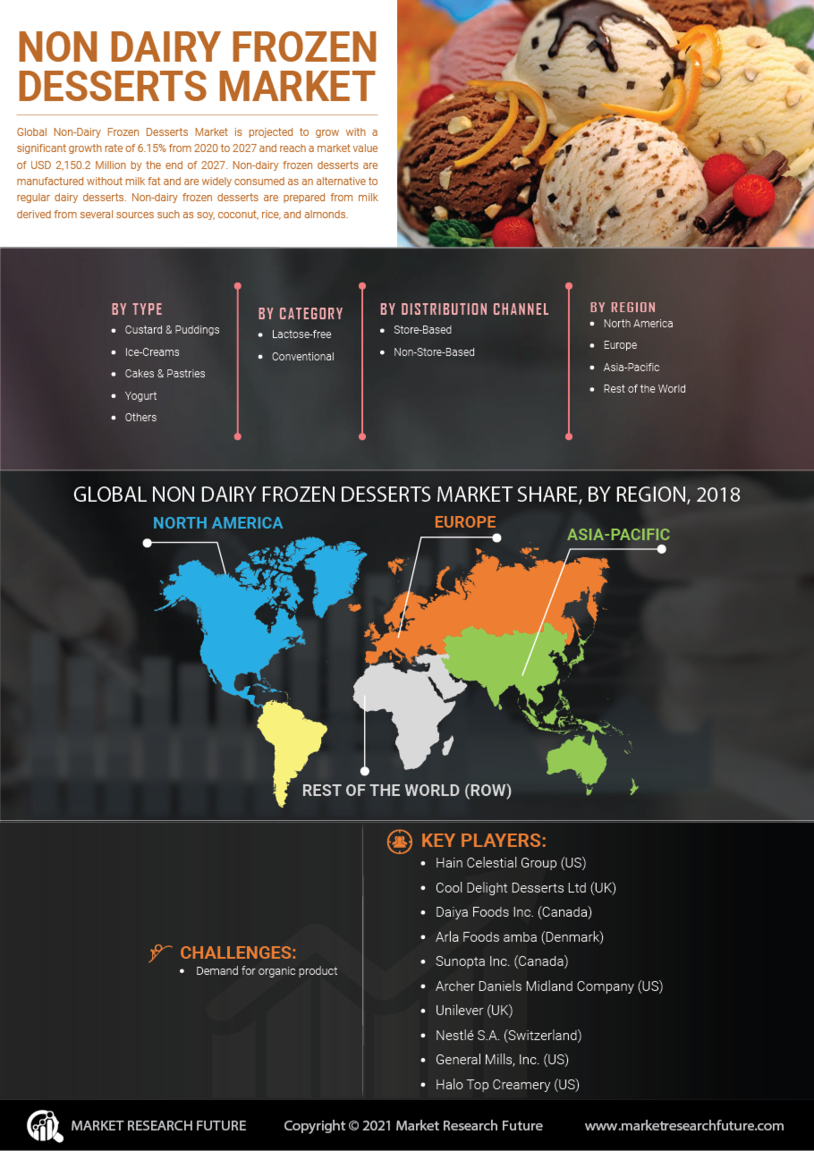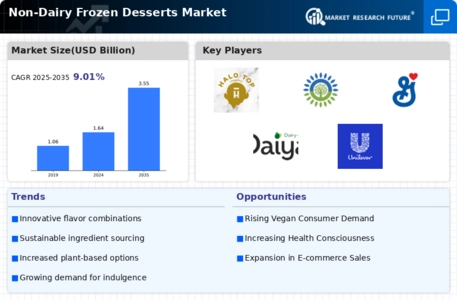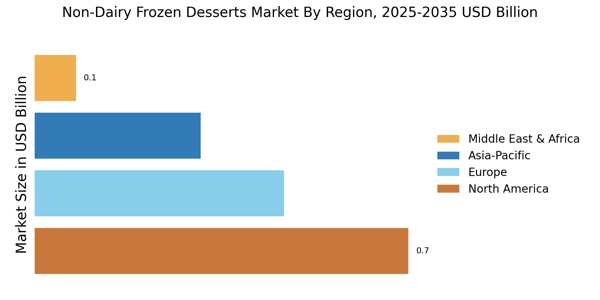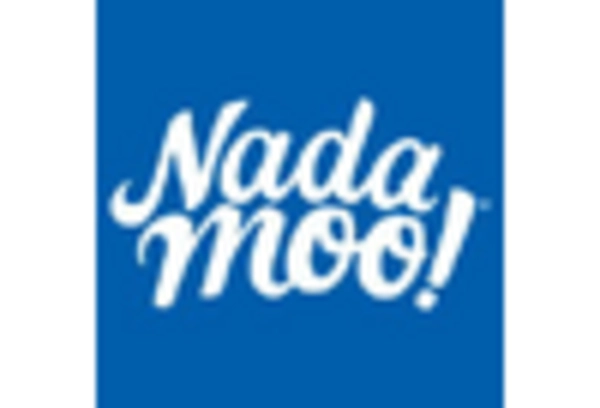Diverse Flavor Innovations
Diverse flavor innovations are playing a crucial role in shaping the Non-Dairy Frozen Desserts Market. As competition intensifies, brands are compelled to differentiate their offerings through unique and exciting flavors. This trend is evident in the introduction of exotic ingredients and combinations that cater to adventurous palates. Market data reveals that flavor variety is a key factor influencing consumer preferences, with many seeking out non-dairy options that provide a similar indulgent experience to traditional desserts. The continuous exploration of new flavors not only attracts a broader audience but also encourages repeat purchases, thereby driving growth within the Non-Dairy Frozen Desserts Market. As innovation persists, the market is likely to witness an influx of creative flavor profiles.
Health Benefits of Non-Dairy Options
The perceived health benefits associated with non-dairy options significantly contribute to the growth of the Non-Dairy Frozen Desserts Market. Many consumers are increasingly aware of lactose intolerance and the potential health issues linked to dairy consumption. Non-dairy frozen desserts, often made from almond, coconut, or soy, are perceived as healthier alternatives. Market data suggests that the non-dairy segment is projected to grow at a compound annual growth rate of over 10% in the coming years. This growth is driven by consumers seeking lower cholesterol and fat content, as well as those looking for products enriched with vitamins and minerals. As health awareness continues to rise, the Non-Dairy Frozen Desserts Market is likely to expand, with brands focusing on nutritional value and ingredient transparency.
Rise of Veganism and Plant-Based Diets
The increasing adoption of veganism and plant-based diets appears to be a pivotal driver for the Non-Dairy Frozen Desserts Market. As consumers become more health-conscious, they are gravitating towards alternatives that align with their dietary preferences. Reports indicate that the plant-based food sector has experienced substantial growth, with non-dairy products witnessing a surge in demand. This trend is likely to continue, as more individuals seek to reduce their consumption of animal products. Consequently, manufacturers are innovating to create a diverse range of non-dairy frozen desserts that cater to this expanding demographic. The rise in veganism not only influences consumer choices but also encourages brands to enhance their product offerings, thereby propelling the Non-Dairy Frozen Desserts Market forward.
Increased Availability and Accessibility
Increased availability and accessibility of non-dairy frozen desserts are vital drivers for the Non-Dairy Frozen Desserts Market. Retailers are expanding their product ranges to include a wider selection of non-dairy options, making these products more accessible to consumers. This trend is supported by the growing presence of non-dairy brands in mainstream grocery stores and specialty shops. Industry expert's suggest that the expansion of distribution channels is likely to enhance consumer awareness and encourage trial among those who may have previously overlooked non-dairy alternatives. As more consumers discover the variety and quality of non-dairy frozen desserts, the Non-Dairy Frozen Desserts Market is expected to experience sustained growth, driven by increased consumer engagement and product availability.
Sustainability and Environmental Concerns
Sustainability and environmental concerns are increasingly influencing consumer purchasing decisions, thereby impacting the Non-Dairy Frozen Desserts Market. As awareness of climate change and ecological issues grows, consumers are more inclined to choose products that are perceived as environmentally friendly. Non-dairy frozen desserts typically have a lower carbon footprint compared to their dairy counterparts, which appeals to eco-conscious consumers. This shift in consumer behavior is prompting manufacturers to adopt sustainable practices, such as sourcing ingredients responsibly and utilizing eco-friendly packaging. Market analysis indicates that brands emphasizing sustainability are likely to capture a larger share of the Non-Dairy Frozen Desserts Market, as consumers prioritize products that align with their values.


















Leave a Comment